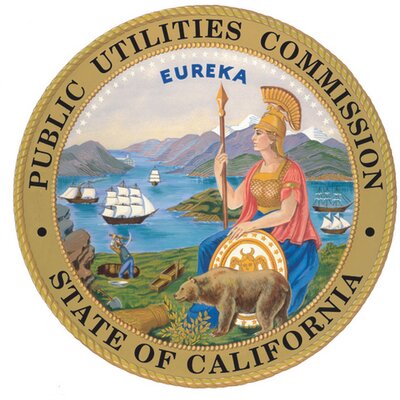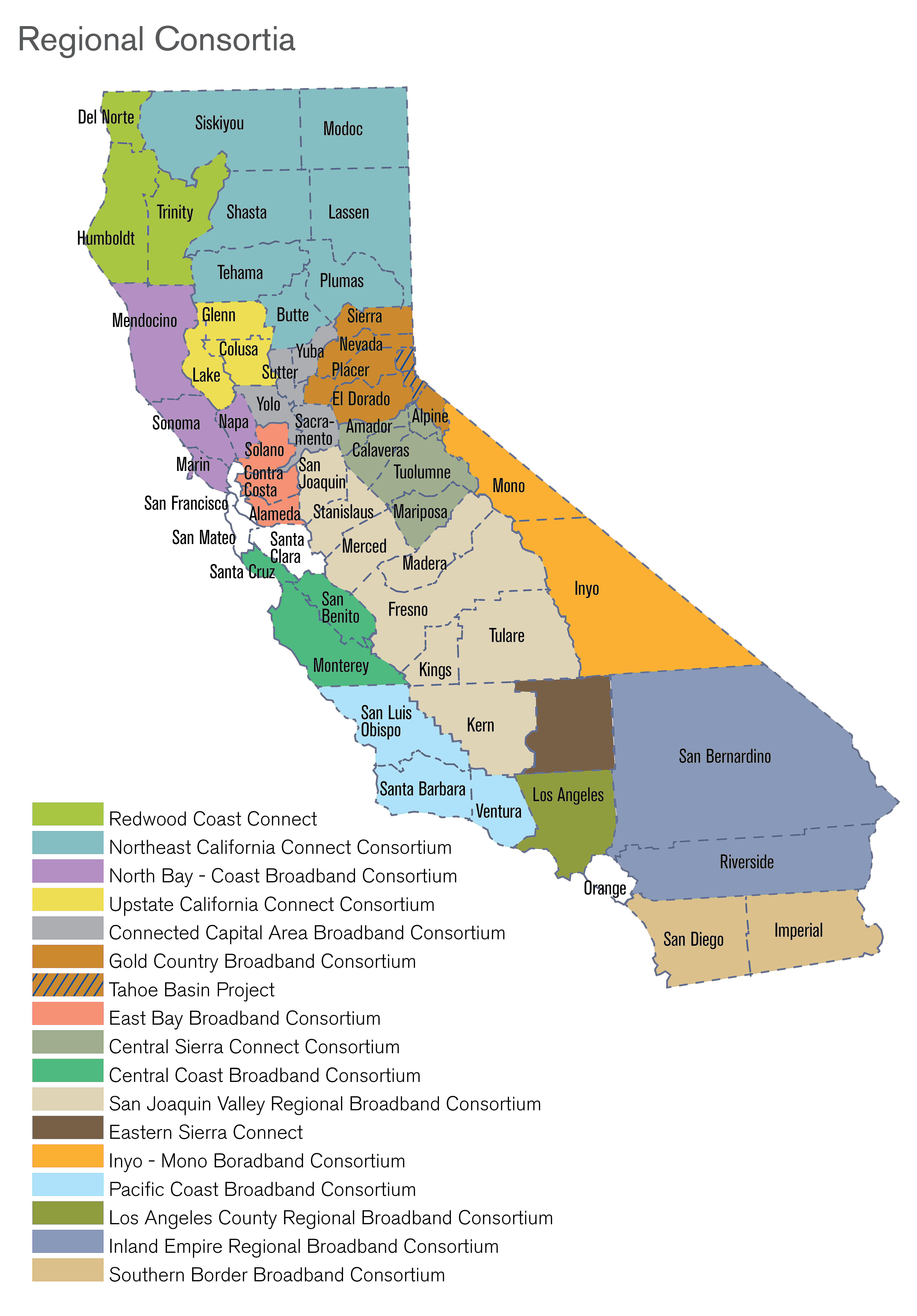FOCUS
California has more challenging terrain for broadband infrastructure deployment than any other state. CETF managed the contracts for the original broadband mapping prepared for the Governor’s Broadband Task Force. Based on those maps and surveys conducted by Regional Consortia, CETF estimated that broadband was available in 2008 to approximately 94% of all residences, which translated to 768,000 unserved households (HHs) or about 2.2 million people, the population of the State of New Mexico. Moreover, the unserved households were spread out over 44,000 square miles, the size of the State of Kentucky. The CETF goal of 98% deployment meant reaching 2/3 of those households or at least 512,000 unserved residences that existed in 2008. California also is home to 109 federally recognized Native American tribes and tribal lands are some of the most remote unserved areas in the state.
In 2007, CETF facilitated the formation of voluntary Regional Consortia and funded Rural Demand Aggregation Projects to assess needs, aggregate demand, identify public assets, and delineate conceptual deployment options to attract private investment. These efforts turned out to be timely when the Legislature and CPUC established the California Advanced Services Fund (CASF) in 2008 and President Obama and Congress passed the American Recovery and Reinvestment Act (ARRA) in 2009 to support broadband infrastructure deployment. Information and data gathered by the Regional Consortia were readily available for broadband providers to use in preparation of applications for CASF and ARRA funding. And, Regional Consortia educated and engaged local leaders to help secure funding for broadband projects.
CASF was constituted by reforming a high-cost telephone subsidy fund that was collecting about $300 million annually from customers. CASF reduced the surcharges such that a total of $315 million has been authorized for CASF over the last 9 years—resulting in tangible relief for consumers while still generating modest funds to support broadband infrastructure deployment. Although CETF was not involved in the formation of CASF and has received no CASF funding, CETF sponsored subsequent legislation that added $215 million since its inception, including establishing the Regional Consortia and Public Housing Accounts. The CETF goal of 98% deployment became state law in 2013 and was applied to each region in the Internet For All Now Act of 2017, which adds $330 million to CASF over the next 5 years.
To date, the CPUC has approved 62 CASF projects (including matching funds for ARRA grants) reaching more than 119,000 HHs. The combination of wireline and wireless networks has achieved about 97% deployment overall, however 43% of all rural households still have no access. The CPUC reports that today 360,000 HHs must be reached to achieve the 98% goal statewide and 424,000 HHs to achieve the goal by each region (at the original CPUC thresholds of 6 Mbps download and 1.5 Mbps upload, which CETF uses as a good measure of how many residents have unacceptable speeds although the Legislature has accepted industry’s request to set 6/1 Mbps as the new threshold.) An important caution for policymakers and stakeholders is to understand that modification of definitions on paper do not fool residents into thinking they have adequate access to the Internet.
The Federal Communications Commission (FCC) Connect America Fund 2 (CAF2) funds will improve 231,835 locations (not only HHs) in California. The most recent analysis by the CPUC estimates that after accounting for CAF2 improvements at least 127,000 HHs will remain to be reached to achieve the 98% deployment goal by region. The actual figure may be higher. The average cost per HH for CASF projects is around $1,700 and the average subsidy for CAF2 is $2,550 per location, which CETF recommends as the reasonably-conservative basis for estimation of funds needed to achieve 98% deployment by region. Thus, the additional $300 million for the CASF Infrastructure Account (out of a total of $330 million) authorized in the Internet For All Now Act of 2017 is more than justified. Further, broadband connectivity is vital for tribal lands, agriculture, and county fairground sites for emergency response, so more collections into CASF will be needed in the future.


